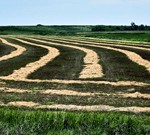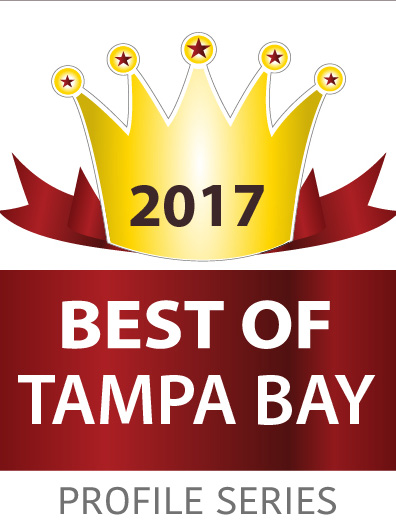Farming Businesses: Nine Tips from the IRS to Help with Taxes

Farming businesses encompass a wide range of operations. All individuals, partnerships, or corporations that cultivate, operate, or manage farms for profit, either as owners or tenants, are designated as farmers. The term “farm” includes livestock, dairy, poultry, fruit, and truck farms, as well as plantations, ranches, ranges, orchards, groves and all land used for farming operations.
Cash versus Accrual
Most farmers use the cash method of accounting because they find it easier to keep records using the cash method. However, certain farm corporations and partnerships and all tax shelters must use an accrual method of accounting.
Individuals report their farm income on Schedule F, Profit or Loss From Farming. Whether you raise livestock or poultry, grow fruits or vegetables or engage in another farming activity, here are nine tax tips and reminders from the IRS.
1. Crop insurance. Insurance payments from crop damage count as income. In general, you should report these payments in the year you receive them. There may be a way to postpone reporting of crop insurance proceeds until the following year. Consult with your tax adviser about this exception.
Treat as crop insurance proceeds the crop disaster payments you receive from the federal government as the result of destruction or damage to crops, or the inability to plant crops because of drought, flood, or any other natural disaster.
2. Sale of items purchased for resale. Let’s say your farming business sold livestock or items that you bought for resale. You must report the sale. Your profit or loss is the difference between your selling price and your basis in the item. Usually, basis is the cost of the item. Your cost may also include other amounts you paid such as sales tax and freight.
3. Weather-related sales. Bad weather such as a drought or flood may force you to sell more livestock than you normally would in a year. If so, you may be able to delay reporting a gain from the sale of the extra animals.
You must meet all the following conditions to qualify:
- Your principal trade or business is farming;
- You use the cash method of accounting;
- You can show that, under your usual business practices, you would not have sold the animals this year except for the weather-related condition; and
- The weather-related condition caused an area to be designated as eligible for assistance by the federal government. The designation can be made by the President, the U.S. Department of Agriculture (or any of its agencies), or by other federal agencies.
4. Farm expenses. Farmers can deduct ordinary and necessary expenses they paid for their business. An ordinary expense is a common and accepted cost for that type of business. A necessary expense means it is appropriate for that business.
Depreciation expenses are among those that are deductible. Farmers can depreciate most types of tangible property — except land –– such as buildings, machinery, equipment, vehicles, certain livestock and furniture. Farmers can also depreciate certain intangible property, such as copyrights, patents, and computer software. To be depreciable, the property must
- Be property the farmer owns;
- Be used in the farmer’s business or income-producing activity;
- Have a determinable life; and
- Have a useful life that extends substantially beyond the year placed in service.
Some expenses paid during the tax year may be partly personal and partly business. Examples include gasoline, oil, fuel, water, rent, electricity, telephone, automobile upkeep, repairs, insurance, interest and taxes. Farmers must allocate these expenses between their business and personal parts. Generally, the personal part of these expenses is not deductible.
Example: Let’s say a taxpayer-farmer paid $1,500 for electricity during the tax year. The taxpayer used one-third of the electricity for personal purposes and two-thirds for farming. Under these circumstances, two-thirds of the electricity expense, or $1,000, is deductible as a farm business expense. Records must be maintained to document the business portion of the expense.
5. Employee wages. You can deduct reasonable wages you paid to your farm’s full and part-time workers. You must withhold Social Security, Medicare and income taxes from their wages.
If a farmer pays his or her child to do farm work and a true employer-employee relationship exists, reasonable wages or other compensation paid to the child is deductible. The wages are included in the child’s income and the child may have to file an income tax return. These wages may also be subject to Social Security and Medicare taxes if the child is age 18 or older.
6. Loan repayment. You can only deduct the interest you paid on a loan if the loan is used for your farming business. You can’t deduct interest you paid on a loan that you used for personal expenses.
7. Net operating losses. If your expenses are more than income for the year, you may have a net operating loss. You can carry that loss over to other years and deduct it. You may get a refund of part or all of the income tax you paid in prior years. You may also be able to lower your tax in future years.
Generally, you carry an NOL back to the two tax years before the NOL year and deduct it from income you had in those years. You can choose not to carry back an NOL and only carry it forward. There are rules for figuring how much of the NOL is used in each tax year and how much is carried to the next tax year. Your tax adviser can explain.
8. Farm income averaging. You may be able to average some or all of the current year’s farm income by spreading it out over the past three years. This may cut your taxes if your farm income is high in the current year and low in one or more of the past three years. Ask your tax adviser for more information.
9. Tax credit or refund. You may be able to claim a tax credit or refund of excise taxes you paid on fuel used on your farm for farming purposes. (You cannot currently claim a credit or refund for the tax for the used of dyed diesel fuel or dyed kerosene used on a farm for farming purposes.)
Need more information? Consult with your tax adviser and take a look at IRS Publication 225, Farmer’s Tax Guide.




